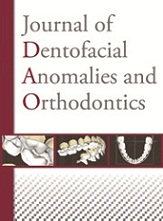No CrossRef data available.
Article contents
Benefits of three-dimensional imaging
Published online by Cambridge University Press: 21 September 2010
Abstract
Three dimensional images derived from X-Rays, scans or Digital Cone Beam Computed Tomography (CBCT) are components of supplementary diagnostic procedures. Using them, practitioners can visualize the anatomic relationships of teeth with each other and with adjacent structures and can discern the presence or absence of root resorption.
These radiographic films can assist in the diagnostic evaluation of impacted, transposed, or duplicated teeth or those situated on the edges of facial clefts. They are indispensable in helping diagnosticians to rule out contraindications as they establish treatment plans and continue to be useful as guides when mechano- therapy starts.
Recently, CBCT has become accessible for use in dental offices even though it has been an expensive and bulky instrument with a relatively high radiation output. Today, with a more acceptable radiation dosage, it is well accepted as an alternative diagnostic procedure in the field of oro-facial implants, but overall, it cannot yet be considered as a technique that should be systematically employed in every supplementary examination.
Keywords
- Type
- Research Article
- Information
- Journal of Dentofacial Anomalies and Orthodontics , Volume 13 , Issue 1: The canine , March 2010 , pp. 75 - 90
- Copyright
- © RODF / EDP Sciences, 2010




